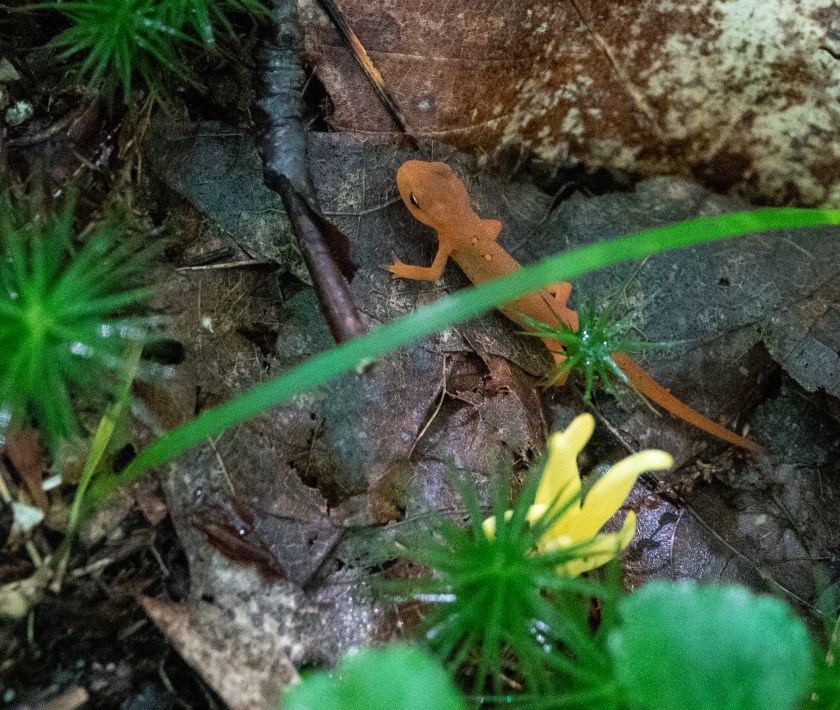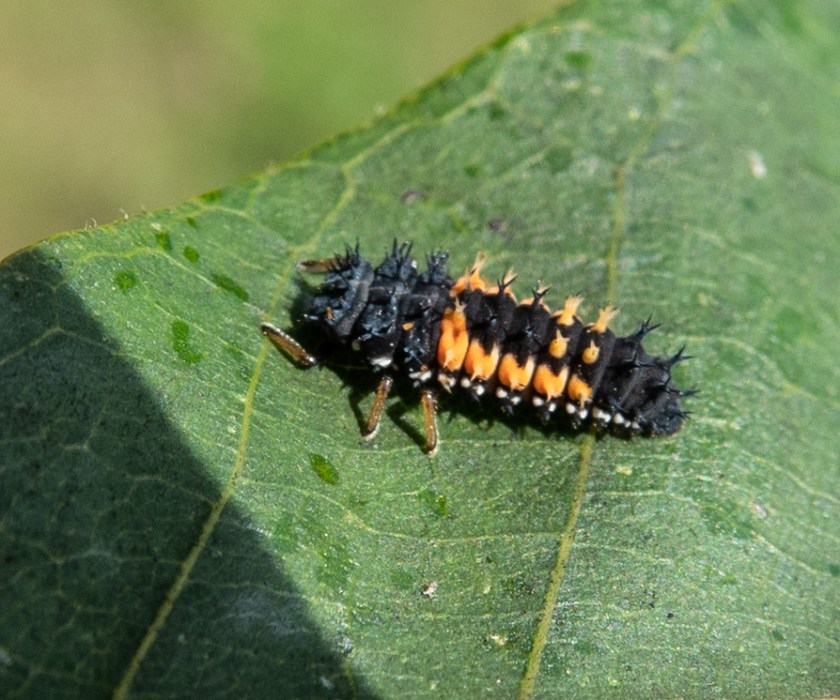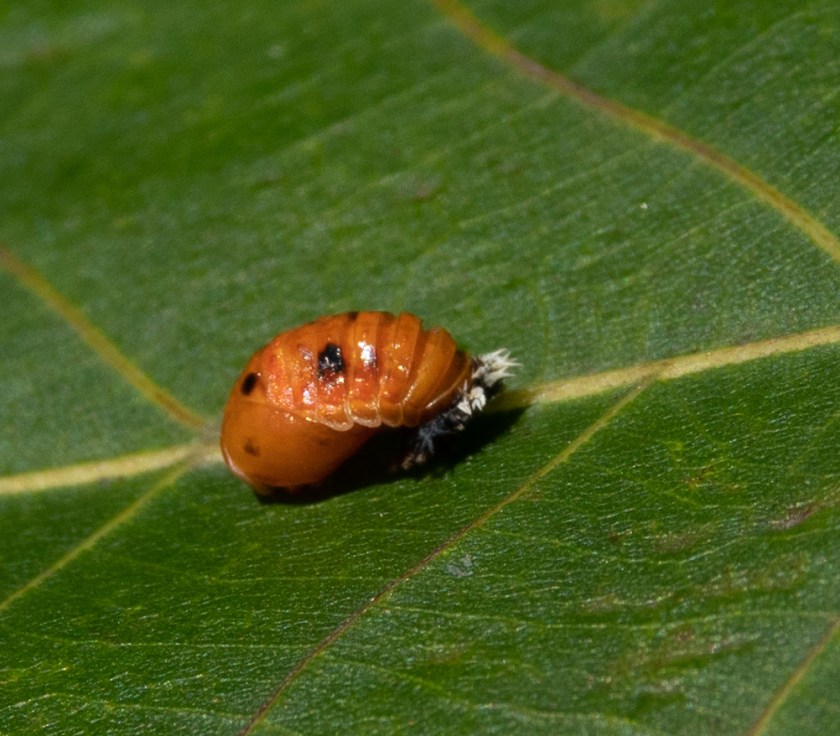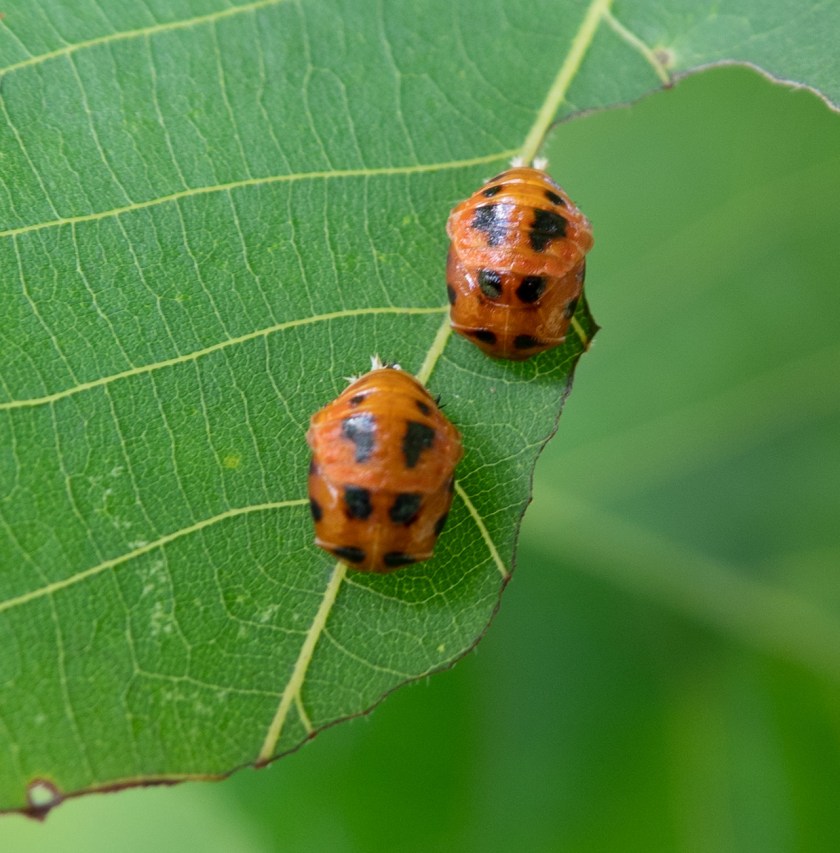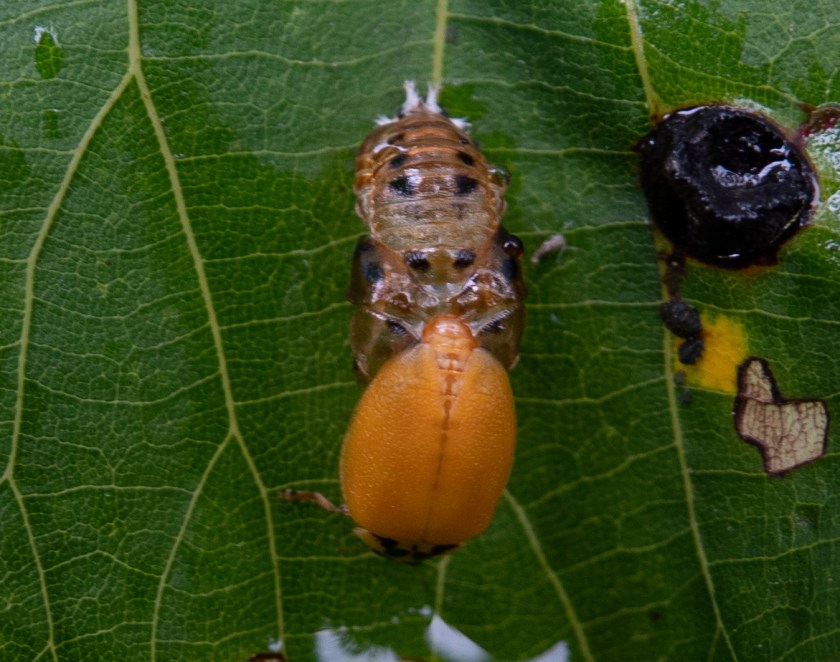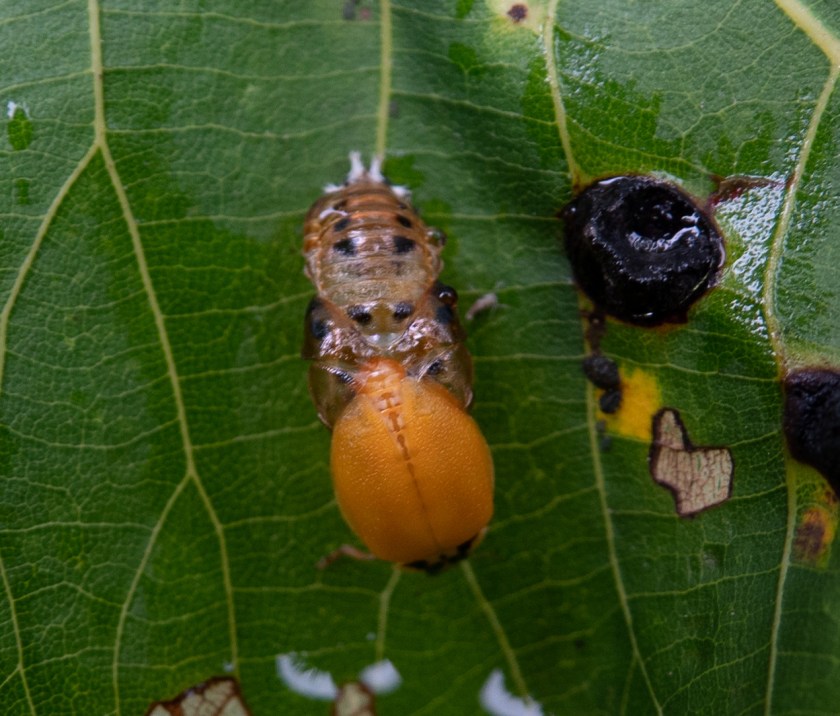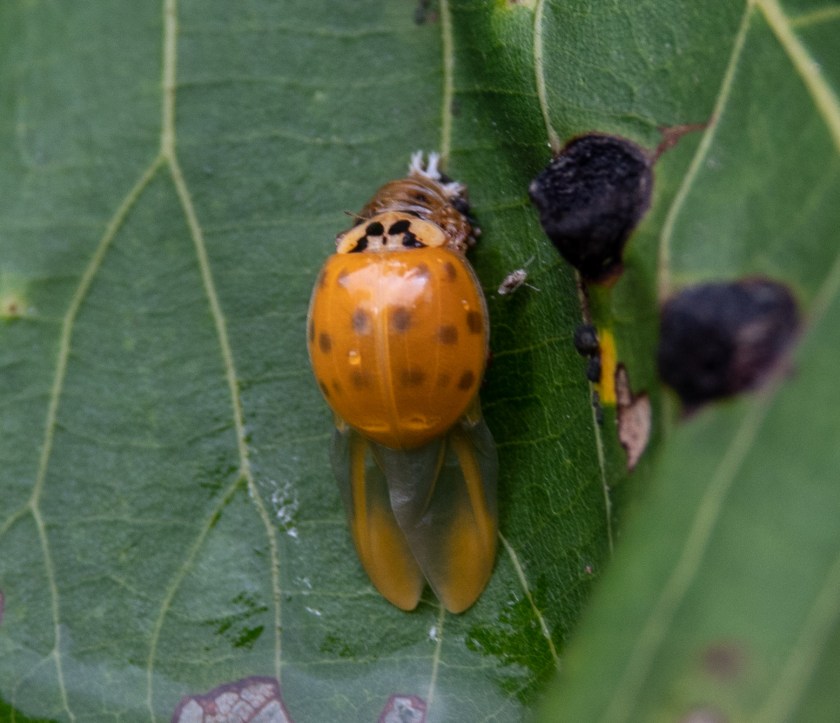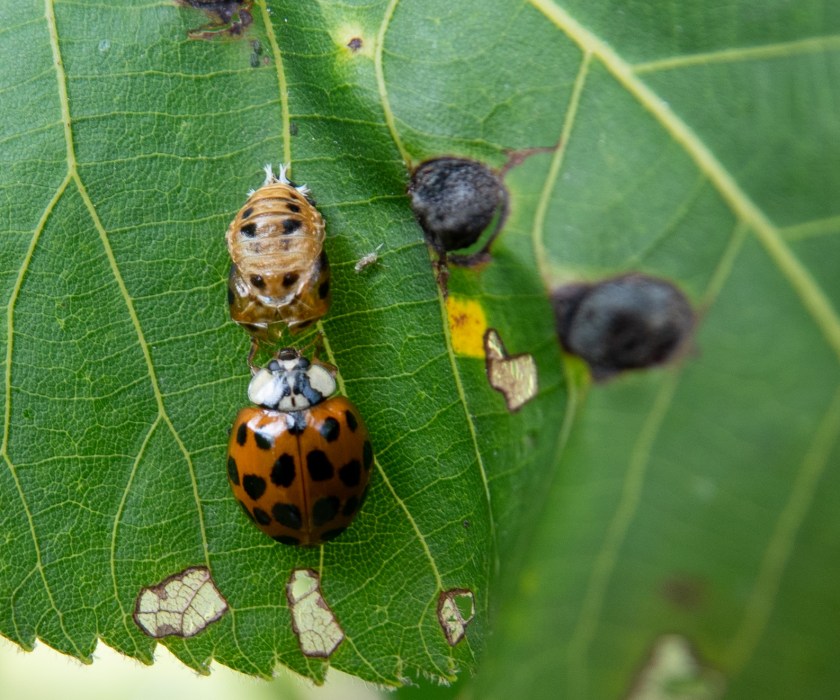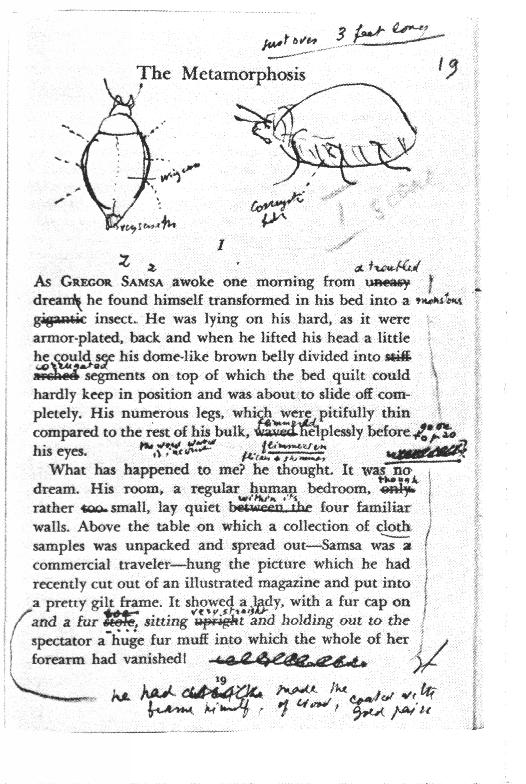[This is my last post for a while, because I am off to Tanzania. Enjoy your empty inbox, and watch for a distinct change of ecosystem on my return!]
You may have noticed a shortage of mammals in these posts this summer. That’s partly because I haven’t seen as many as usual, and partly because some of the ones I have seen were not patient enough to wait for photos. Like the large black bear that crossed the road near my house in early July. Though I did find a rotten tree stump he had ripped apart in a search for ants:

The largest mammal so far this summer was a white-tailed deer in mid-August, crossing the trail under the impression we had now gone past and wouldn’t look her way.

She didn’t run, just lingered in the trees nearby and watched us. I wondered if she had a fawn nearby, but we saw no sign of one.

White-tailed deer females stand about 36 inches at the shoulder, similar to the UK fallow deer.
The smallest mammals are my chipmunks. This one was having a good groom:

These two below may be a mother and young, Chipmunks have young either in the spring, or late summer, and by 6 weeks, when they first venture out, they look just like adult chipmunks, but are about 2/3 of their size. The one on the right could be one of this year’s second batch. Litters usually number four to five, but I have only seen these two recently. There is a fox about the place…..

They shared a rosehip (excellent source of Vitamin C, as I can attest to from being fed rose-hip syrup in 1950’s England).
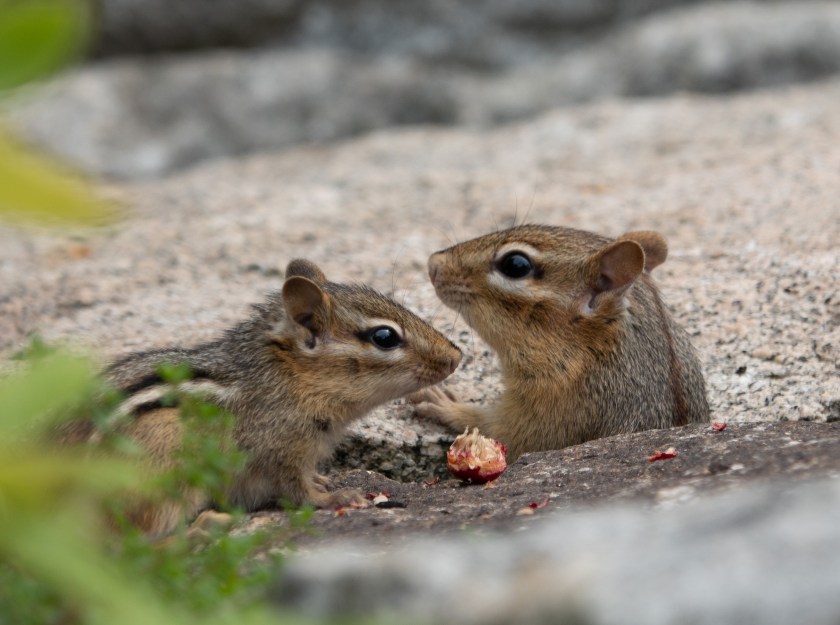
I have never seen two chipmunks socializing before. They usually forage alone, and chase each other off food sources, or feed nearby but cast wary glances at each other. (And since I can read your minds, I am pretty sure they weren’t mating. The lefthand one came briefly, gave me an assessing look, greeted the other one and left almost immediately. And no key bodily areas came into contact. ) What is more, one of them showed a glimpse of what I think is a healthy teat:*

The Native Americans have a lovely story about how the chipmunk got its stripes:
http://www.oneidaindiannation.com/how-the-chipmunk-got-its-stripes/
* Cynics may think it is not a teat, but either a penis (!), or even a tick, but I am fairly sure it is a teat.
